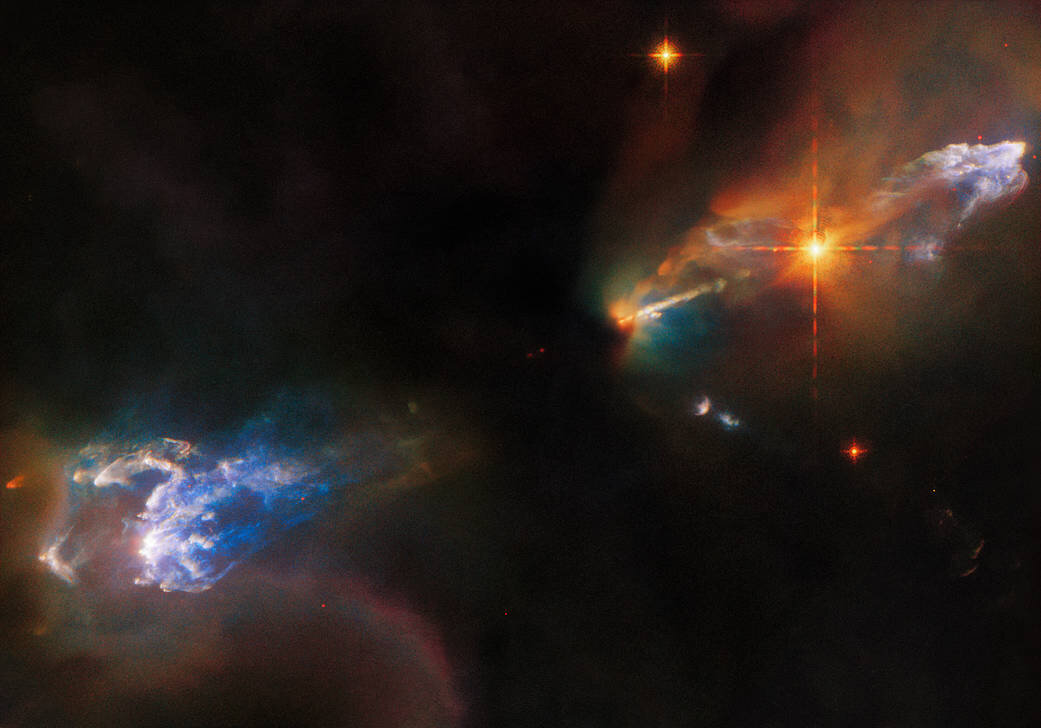 |
| Credit: ESA/Hubble & NASA, B. Reipurth, B. Nisini |
The lives of young stars are turbulent, as seen by this view of the NASA/ESA Hubble Space Telescope's Herbig-Haro objects HH 1 and HH 2. Both objects are located in the constellation Orion and are approximately 1,250 light-years away from Earth. The luminous cloud above the brilliant star in the top right of this photograph is HH 1, and the cloud in the bottom left is HH 2. While both Herbig-Haro objects are visible, the young star system that created them is hidden in the heavy clouds of dust at the center of this view. However, a brilliant jet of gas is detected shooting out from the center black cloud from one of these stars.
The brilliant star between that jet and the HH 1 cloud was formerly assumed to be the source of these jets, however, it is really an unrelated double star that developed nearby. Herbig-Haro objects are luminous clusters seen in the vicinity of young stars. They develop when gas jets emitted by these newborn stars are hit with surrounding gas and dust at incredible speeds. Hubble studies in 2002 found that sections of HH 1 are traveling at speeds of up to 248 miles (400 kilometers) per second!
Two groups of astronomers requested Hubble observations for two separate research in the case of HH 1 and 2. The first investigation focused on the structure and velocity of the Herbig-Haro objects shown in this image, providing astronomers with a clearer understanding of the physical processes that occur when outflows from young stars meet with surrounding gas and dust. The second research looked at the outflows themselves in order to build the framework for future NASA/ESA/CSA James Webb Space Telescope studies. Webb's capacity to see through the dust clouds that cover newborn stars will change the study of outflows from young stars.



0 Comments